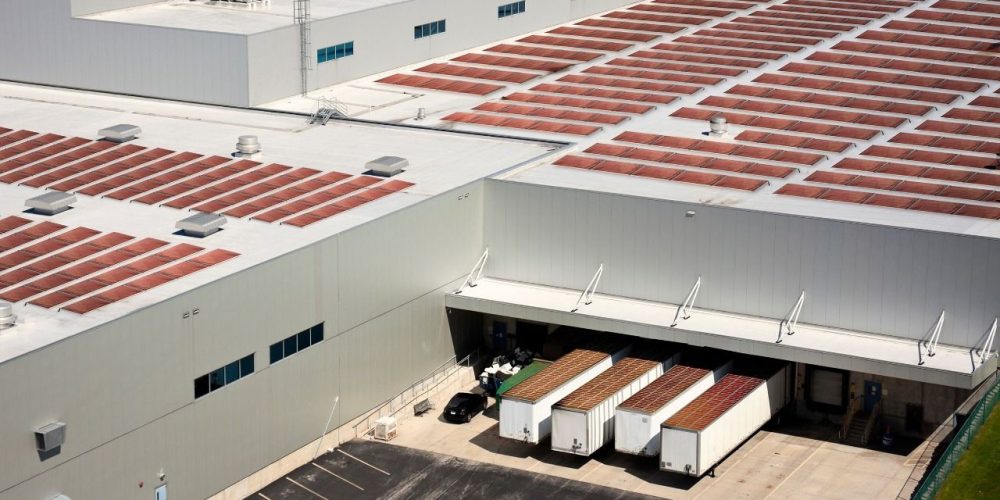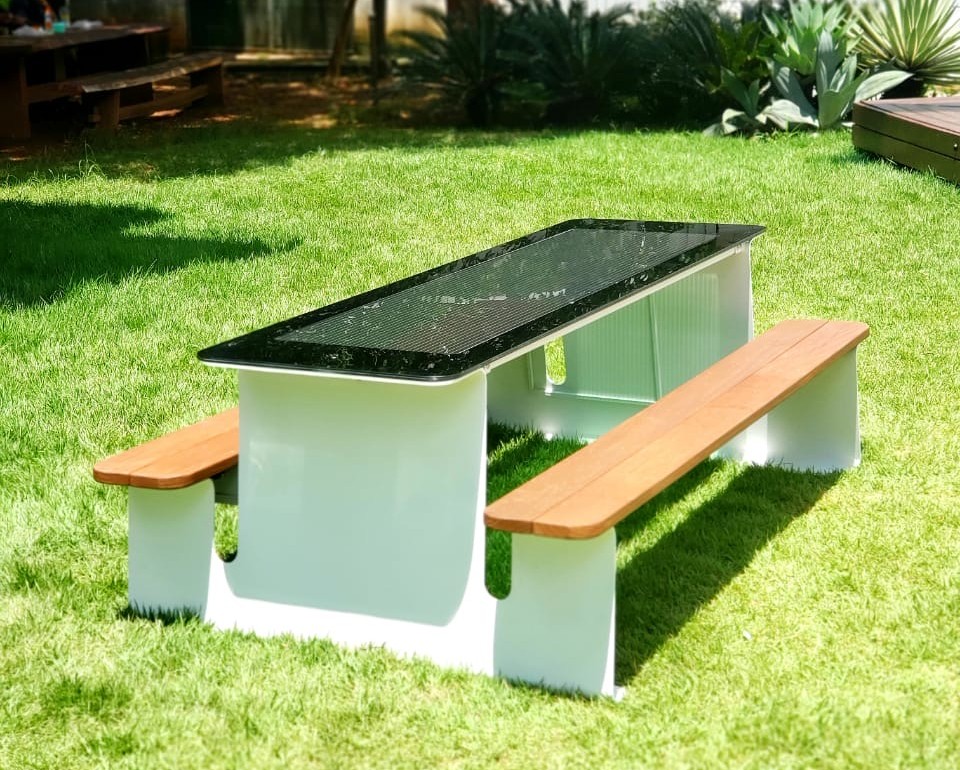
The Biden administration is calling for action in order to stem climate change for a wide range of sectors, and that of course includes buildings and transport as major emitters. It’s going to require the rapid implementation of innovative new ideas and products.
Enter ready-to-roll – literally – “organic energy company” GO-OPV. All the products and applications are manufactured by GO-OPV from organic film printed by Brazilian company Sunew. The product is a thin film called ORENgE that can capture any light and convert it to clean energy in a more efficient way than traditional solar panels. The panels are thin, flexible, ultra lightweight, and can be used both vertically and horizontally.
GO-OPV, a Florida-based company, launched ORENgE in the US in November. The technology is already being used in South America, as PepsiCo’s Brazil distribution centers have been working with the power technology for stand-by charging systems, interior lights, and onboard printing.
GO-OPV claims ORENgE is “is the only commercial organic technology available in the US that is transparent, non-toxic, flexible, thin, durable, recyclable, sustainable, and cost competitive.”
Electrek spoke with Paul Frischer, president of GO-OPV, about how ORENgE works.
Can you tell us about your company, GO-OPV?
GO-OPV is the leading product and application company bringing its zero-carbon ORENgE organic energy to the US market by providing ultra-low carbon footprint power to buildings (building-integrated photovoltaics), semi-trucks and tractor-trailers, outdoor furniture, and more. GO-OPV’s ORENgE technology is the lightest, most powerful organic energy technology for the growing global base of commercial organic energy applications.
What is organic energy, and how does GO-OPV’s technology, ORENgE, work?
Organic energy relies on any form of light to produce power, whether it’s indoor, low, or diffused – unlike solar power, which is dependent on sunlight. ORENgE is a recyclable product that provides power through an earth-abundant, low CO2, and sustainable energy solution. ORENgE is an energy source that is printed from organic ink. It is the most sustainable organic energy alternative because it uses recyclable materials abundant in nature. It has the lowest carbon footprint and the lowest energy payback among organic technologies.
ORENgE’s use of organic materials is another major differentiator to silicon solar panels that rely on chemicals like cadmium telluride, silicon tetrachloride, and hydrofluoric acid, among others. ORENgE is semi-transparent and integrates to any surface, like building facades, home siding, tractor-trailers, park benches, and more, for applications in vertical or horizontal installation – something else solar can’t do. While ORENgE can be hung vertically, on the sides of buildings, solar panels must be placed on roofs, directly facing the sun. Thanks to its flexibility, ORENgE can also be applied to tractor-trailers and semis, unlike fragile silicon panels.
What is ORENgE made of, is it manufactured sustainably, and if so, how?
ORENgE is the greenest option among all alternative, renewable power sources due to its printing production process and the organic materials used. To make ORENgE, GO-OPV uses rollable film that is made up of eco-friendly materials (fullerene and non-fullerene-based inks) as well as recyclable earth-abundant materials. The printing production process has the lowest energy demand in manufacturing, resulting in the lowest carbon footprint among renewables.
How can ORENgE be used and by whom, and what are the benefits to its users?
ORENgE allows for the installation of the ultimate zero-carbon power solution within the building-integrated photovoltaics, trucking, and outdoor sustainability markets. For example:
As building-integrated photovoltaics (BIPV) continues to be integrated into more buildings as a principal or ancillary power source, ORENgE offers a solution that can be applied to glass surfaces and façade applications to power lights in conference rooms 24/7, entire office floors across multiple real estate applications, and UL 924 backup at a zero-carbon footprint.

The transportation industry is in desperate need of solutions addressing zero-carbon power generation. Because ORENgE is lightweight, flexible, and durable, it can be applied to semi-trucks and tractor-trailers to power on-board electronics (printers, credit card machines, lighting, tracking systems, electronic locks, etc.), semi-trailers (wagons that often remain detached from the tractor for long periods of time), and reefer (the refrigeration system of tractor-trailers). With ORENgE, trucks have a longer lifespan, resulting in more income per truck. ORENgE increases battery lifetime and reduces unscheduled maintenance and its direct cost.
ORENgE brings its zero-carbon power source to outdoor furniture, so you can charge your phone on park benches and ensure safety at public bus stops with 24/7 light. Because of its sleek design and flexibility, the application possibilities are endless, from beach umbrellas to carports, ORENgE can provide 24/7 outdoor power for daytime and added battery storage for nighttime.
How much does ORENgE cost?
ORENgE is cost-competitive with all renewable energy sources, since organic energy power is delivered onsite of the required power load demand and, in many cases, the lowest form of energy. ORENgE benefits from the lower cost since the onsite delivery of ORENgE power removes the cost of transmission lines, distribution lines, and higher cost of AC systems.
You can check out all of ORENgE’s power stats here. It’s sold to corporate and industrial clients at present, but you can get in touch with the company to discuss possible consumer use.
What do you think of this product? Let us know in the comments below.

Paul Frischer is the president of GO-OPV. He is a global management and renewable energy senior executive with 25 years of successful leadership experience in cross border enterprise companies, financial technology, renewable energy, and ESG investment. Paul’s background includes renewable energy initiatives at UBS, NKF, and Ledvac Capital.
Photos: ORENgE
Subscribe to Electrek on YouTube for exclusive videos and subscribe to the podcast.
Author: Michelle Lewis
Source: Electrek




